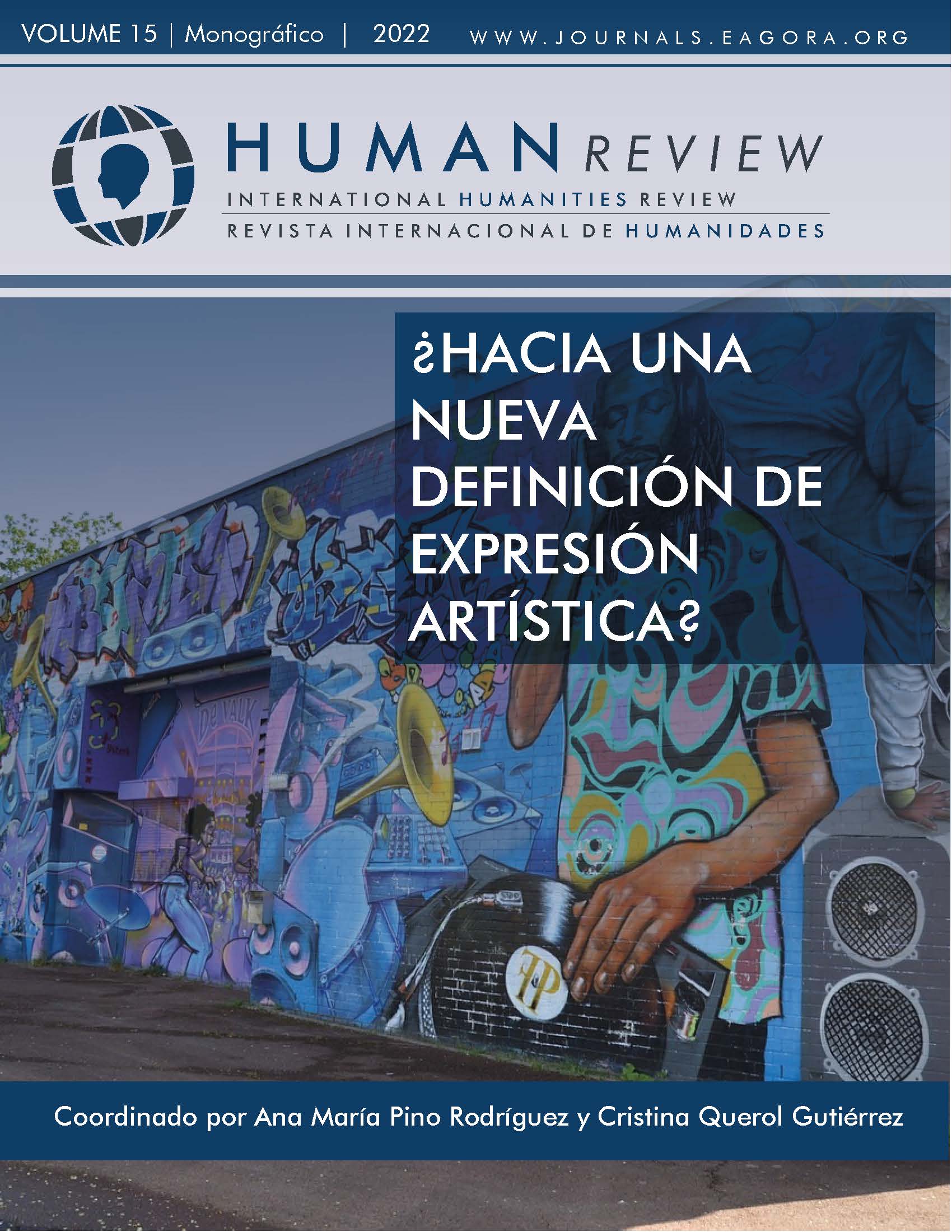Dislocated narratives in the alternative space-time of Christian Marclay’s The Clock
DOI:
https://doi.org/10.37467/revhuman.v11.4351Keywords:
Temporality, Spatiality, The Clock, Marclay, Narrative, Videoinstallation, DislocationAbstract
The Clock is a video installation in which the fictitious rhythm of celluloid is humanised through a narrative that operates from the anachronism of the appropriation of archive images. Marclay uses in his montage different mechanisms of narrative, sound and visual dislocation which, together with the anachronistic use of the filmic image, generate a heterochronous experience in the spectator. The result is the generation of an alternative to the concept of normalised space-time, which is re-signified as a multi-rhythmic and heterogeneous concept, offering the possibility of thinking another reality that gives us back the autonomy and control of its experimentation.
References
Anaszkiewicz, P. (2016). La videoinstalación, los tiempos no lineales, y el flujo de la conciencia. Revista Inventio, 12(28), 53-57. https://bit.ly/3aKUOyw
Bal, M. (2008). 2Move. Video art + Migration. Cendeac.
Bal, M. (2016).Tiempos trastornados. Análisis, historias y políticas de la mirada. Akal. Estudios Visuales.
Bal, M. (2017). El tiempo que se toma. Contranarrativas. Revista de estudios visuales, (0), 8-21.
Deleuze, G.(1988). Diferencia y repetición (A. Cardín, Trad.). Júcar. (Obra original publicada en 1969).
Deleuze, G. (1989). Cinema 2: The time-image (H. Tomlinson y R. Galeta, Trad.). The Athlone Press. (Obra original publicada en 1985). DOI: https://doi.org/10.5040/9781350251991
Groys, B. (2008). Topology of contemporary art. En O. Enwezor, N. Condee y T. Simth (Eds.), Antinomies of art and culture. Modernity, Postmodernity and contemporaneity (pp.71-80). Duke University Press. https://bit.ly/3aGKfN0 DOI: https://doi.org/10.1215/9780822389330-006
Guardiola, I. (2016). El found footage audiovisual como interfaz dialéctica y alegórica. En T. Martínez y J.L. Marzo (Eds.), Interface Politics. 1st InternationalConference 2016 (pp.133-153) Publicaciones Gredits.
Hernández-Navarro, M.A. (2008). Heterocronías. Tiempo, arte y arqueologías del presente. Cendeac.
Hernández-Navarro, M.A. (2017). Contratiempos de arte contemporáneo. Contranarrativas. Revista de Estudios visuales, (0), 44-53.
Molina, S. (2018). TheClock de Chistian Marclay: en torno a los sistemas de orientación, alteración y medida del tiempo. Aisthesis, (64), 161-178.https://bit.ly/3uThweE DOI: https://doi.org/10.7764/aisth.64.8
Sasso, R. y Villani, A. (2003). Le vocabulaire de Gilles Deluze. Les Cahiers de Noesis, 3. Centre de Recherches d’ Histoire des Idées.
Rodowick, D.N. (1994). The Crisis of Political Modernism: Criticism and Ideology in Contemporary Film Theory. University of California Press. DOI: https://doi.org/10.1525/9780520915169
Rodowick, D.N. (1997). Gilles Deleuze’s Time Machine. Duke University Press. DOI: https://doi.org/10.1215/9780822396871
Ruiz, M.L. (2021). Tiempos instalados. Análisis de los comportamientos heterocrónicos y anacrónicos en las instalaciones de arte sociopolíticas contemporáneas (1989-2019).[Tesis doctoral]. Universidad de Murcia, Murcia.
Russell, C. (2018). Archiveology: Walter Benjamin and Archival Film Practices.Duke University Press. DOI: https://doi.org/10.1215/9780822372004
Smith, T. (2016). The Contemporary Condition. The Contemporary Composition.SternbergPress.
Van Alphen, E. (2019). Explosiones de información, implosiones de significado y descarga de afecto (N. Tracetta, Trad.). En N. Tracetta y I. Depetris (Comps.), Afectos, historia y cultura visual. Una aproximación indisciplinada (pp.55-71). Prometeo. (Obra original publicada en 2013).
Velasco, D. (2012). Close up: Borrowed Time. Christian Marclay’s The Clock. Artforum international, 8(2), 200-201.
Zalewski, D. (2012). The Hours: How Christian Marclay created the ultimate digital mosaic. The New Yorker, 12, 50-63
Downloads
Published
How to Cite
Issue
Section
License
Those authors who publish in this journal accept the following terms:
- Authors will keep the moral right of the work and they will transfer the commercial rights.
- After 1 year from publication, the work shall thereafter be open access online on our website, but will retain copyright.
- In the event that the authors wish to assign an Creative Commons (CC) license, they may request it by writing to publishing@eagora.org









